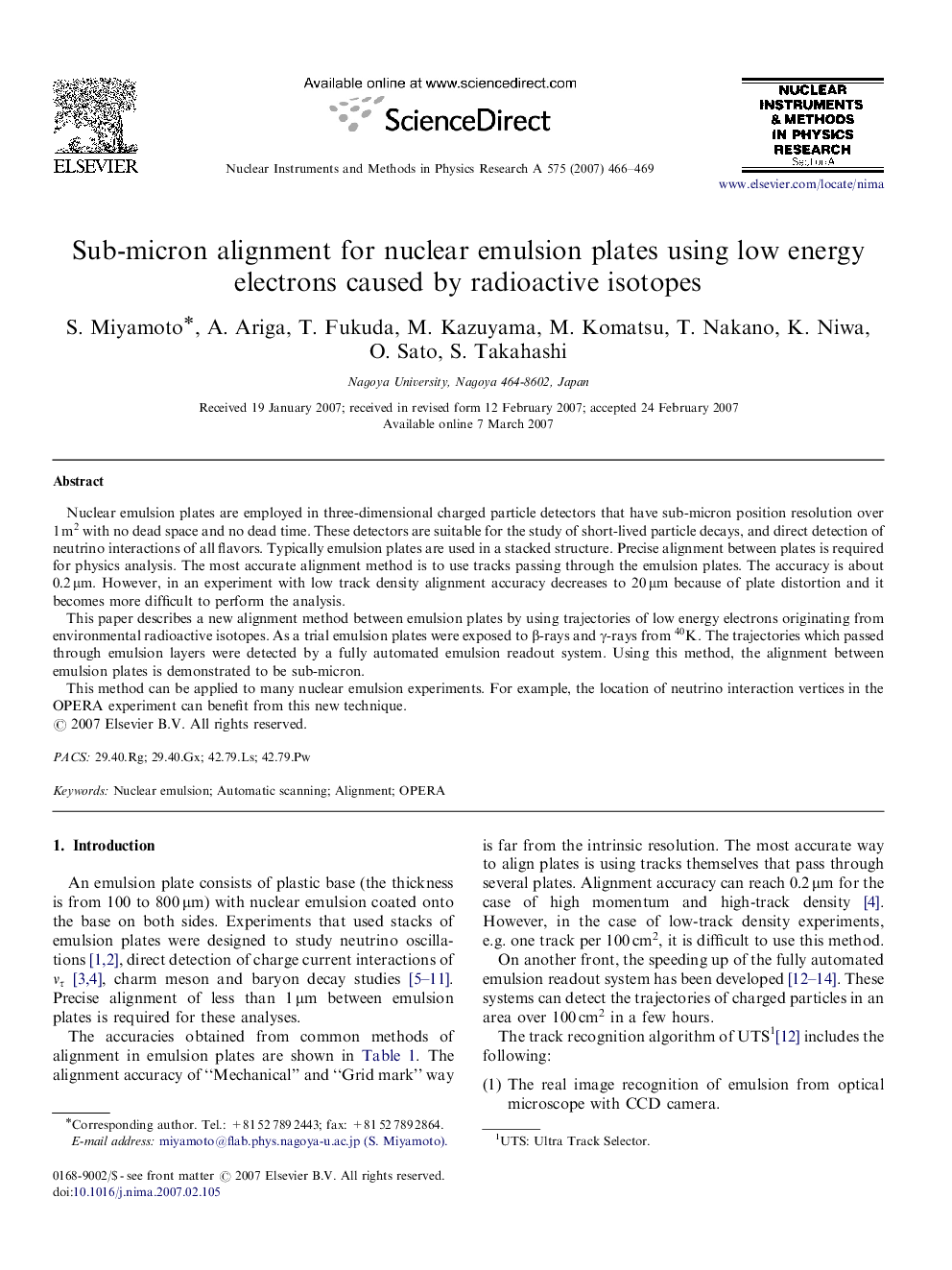| Article ID | Journal | Published Year | Pages | File Type |
|---|---|---|---|---|
| 1831105 | Nuclear Instruments and Methods in Physics Research Section A: Accelerators, Spectrometers, Detectors and Associated Equipment | 2007 | 4 Pages |
Nuclear emulsion plates are employed in three-dimensional charged particle detectors that have sub-micron position resolution over 1m2 with no dead space and no dead time. These detectors are suitable for the study of short-lived particle decays, and direct detection of neutrino interactions of all flavors. Typically emulsion plates are used in a stacked structure. Precise alignment between plates is required for physics analysis. The most accurate alignment method is to use tracks passing through the emulsion plates. The accuracy is about 0.2μm. However, in an experiment with low track density alignment accuracy decreases to 20μm because of plate distortion and it becomes more difficult to perform the analysis.This paper describes a new alignment method between emulsion plates by using trajectories of low energy electrons originating from environmental radioactive isotopes. As a trial emulsion plates were exposed to ββ-rays and γγ-rays from K40. The trajectories which passed through emulsion layers were detected by a fully automated emulsion readout system. Using this method, the alignment between emulsion plates is demonstrated to be sub-micron.This method can be applied to many nuclear emulsion experiments. For example, the location of neutrino interaction vertices in the OPERA experiment can benefit from this new technique.
